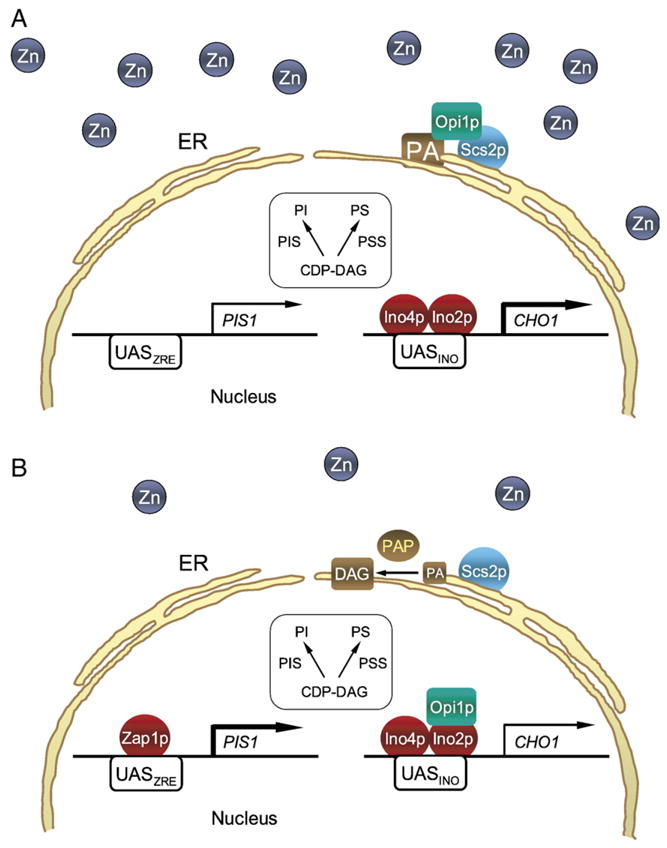Fig. 2.

Models for the transcriptional regulation of PIS1 and CHO1 by zinc depletion in the absence of inositol. (A) PIS1 (left) and CHO1 (right) are expressed at some level when cells are grown in a zinc-rich medium (depicted by numerous zinc atoms outside the nucleus). Maximum expression of CHO1 (indicated by the bold arrow) is dependent on the interaction of the Ino2p–Ino4p complex with the UASINO element in the gene promoter. Under this growth condition, the repressor Opi1p is associated with the nuclear/ER membrane through interactions with PA and Scs2p. (B) when zinc is limiting (depicted by a reduced number of zinc atoms outside the nucleus), the Zap1p transcription factor is induced and binds to the UASZRE in the PIS1 gene promoter to increase transcription (indicated by the bold arrow). Transcription of CHO1 is attenuated in zinc-depleted cells by the interaction of Opi1p with Ino2p (indicated by the thin arrow). Dissociation of Opi1p from the nuclear/ER membrane and its translocation into the nucleus are caused by a decrease in PA concentration. An increase in Mg2+-dependent PA phosphatase (PAP) activity may be responsible for the decrease in PA concentration.
